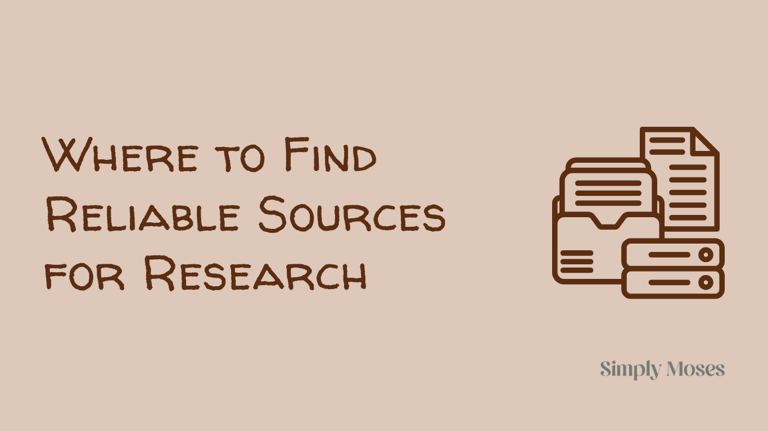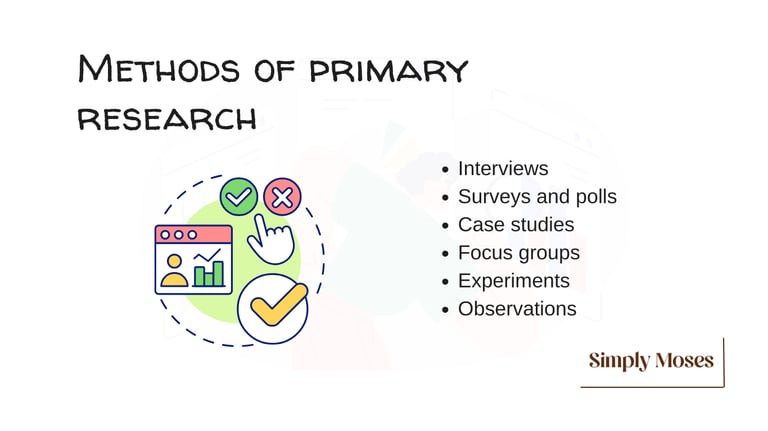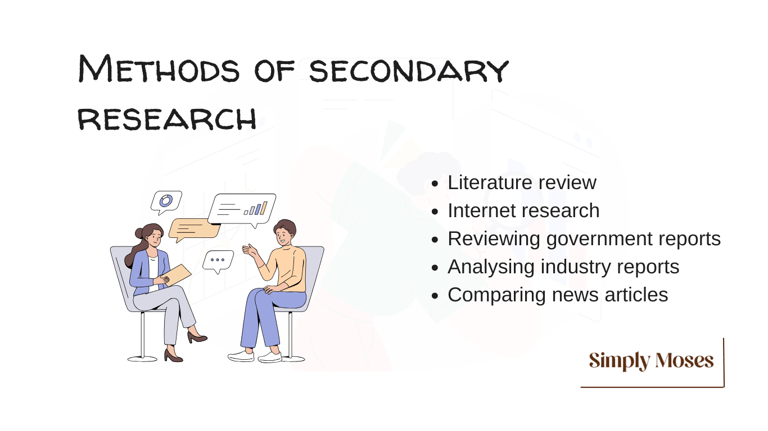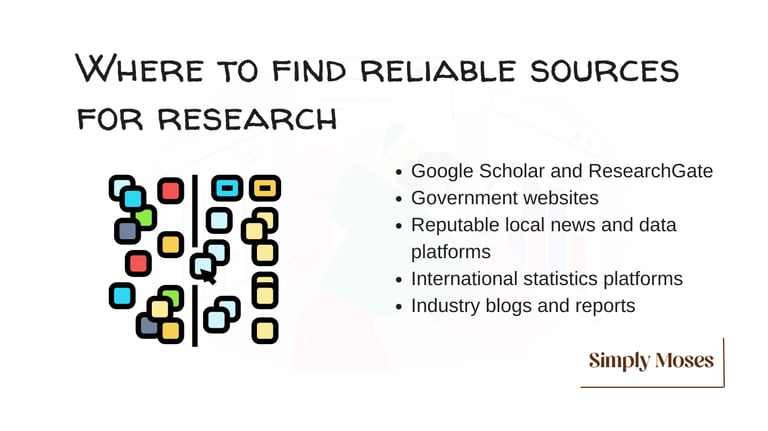🛑 Stop Guessing & Take Action Today!—Limited seats to ensure personalised attention! 👉 Learn More.
Where to Find Reliable Sources for Research: A Beginner’s Guide for Content Writing
Discover where to find reliable sources for research. Learn about primary and secondary sources of data, including examples and research methods.
By Moses Attamah
7/23/20254 min read


Not all information online is accurate, so knowing where to look is important.
A well-researched article or blog post relies on credible sources of data.
So, if you’re looking for strong and convincing data for writing, you’re in the right place.
In this guide, I’ve covered the sources of data and where you can find them.
Sources of data
In content writing, understanding the types of data sources helps you gather reliable and complete facts to support your points and convince your audience.
There are 2 main sources of data:
Primary sources
Secondary sources.
I. Primary sources
Primary sources of data provide direct, firsthand evidence or original materials that have not been interpreted or analysed.
Examples:
Experts: Business owners, professionals, industry leaders
Your customers/audience: Reviews and testimonials
Companies & brands: Case studies, internal data, and success stories from businesses
Experiments & tests: A/B testing, product comparisons, or personal trials.
Primary sources supply information that hasn’t been collected by anyone else before.
What are the methods of primary research?
Primary research methods are ways in which we collect original data from primary sources.
They include:
Surveys and polls
Case studies
Focus groups
Experiments
Observations.
Note that each method has its pros and cons.
So, the method you use depends on:
The information you’re looking for
Your target audience
The available resources.


II. Secondary sources
Secondary sources provide data that someone other than the original source has collected, interpreted, and published.
They include second-hand information, such as interpretations, analyses, and summaries of primary materials.
Examples:
Books written by experts with detailed information (Example: A book on how to succeed in business)
Journal and research papers written by researchers and experts (Example: A medical study on how sleep affects brain function)
Website articles, reports, and blog posts published online (Example: A blog post about “Top 10 Digital Marketing Statistics for 2025”)
Government reports and official documents with reliable facts (Example: A report on unemployment rates from the government website)
Company reports and statistics collected by businesses and research firms (Example: A Facebook annual report or a whitepaper on how people use social media)
News articles from journalists and reporters (Example: A Punch news article about the latest trends in artificial intelligence)
Dictionaries and encyclopedias that define concepts and summarise different topics (Example: Looking up "History of the Internet" on Encyclopedia Britannica).
Secondary sources offer valuable analyses and insights from other researchers who have studied the topic.
What are the methods of secondary research?
Secondary research methods involve collecting and analysing data from existing sources.
They include:
Literature review: Reading books, journals, and reports to understand a topic
Internet research: Searching for data on websites, blogs, and research databases
Reviewing government reports: Using official government documents for data
Analysing industry reports: Examining reports from companies and market research firms
Comparing news articles: Gathering information from news websites and newspapers.


Subscribe to my newsletter!
Where to find credible sources of data
To find credible data for your articles or blog posts, especially as a Nigerian content writer, here’s where to look:
1. General research and academic papers
Use them for scientific studies, research papers, and academic facts.
It’s great for backing up claims with real science or expert research.
Here are the websites
2. Government websites
You can use them for national stats, health data, education reports, and more.
Examples:
CBN – Central Bank of Nigeria
3. Reputable local news and data platforms
These are great for current trends, local market prices, and social/economic news.
Examples:
4. International statistics platforms
These platforms are good for global and African data, surveys, and reports.
They include:


5. Industry blogs and reports
These are great for niche topics like fashion, tech, marketing, and education.
Examples for fashion include:
Other examples include:
Harvard Business Review - Business
HubSpot - Marketing
Moz - SEO
Note that each industry has its blogs and reports.
So, ensure you identify credible blogs and reports available in your industry.
6. Surveys, polls, and interviews
These sources are specifically for original data through primary research.
So, since no one has done the research, do it!
For surveys and polls:
Ask your audience questions using Google Forms or social media polls (Instagram, X, or WhatsApp).
In reporting the data, you can write: “In a small survey I ran among 50 Nigerian students, 77% said they prefer home workouts to going to the gym.”
For interviews:
You can reach out to experts on social media channels or websites to ask for their opinions on your topic.
However, before asking to interview them, search their online platforms to know whether they have already addressed such topics.
Then you can get their quotes or insights.
Remember, each industry has its experts or leaders.
Examples:
Aproko Doctor - Health
Aliko Dangote - Business
Financial Jennifer - Personal finance
Veekee James - Fashion
7. Books and ebooks by experts
Search Amazon or OkadaBooks for books by credible authors on your topic.
8. Reputable news organisations
These are established news outlets with a track record of accuracy and fairness.
Examples:
Subscribe to my newsletter!
3 factors to consider before using your data
Before using your data, ensure it is:
Credible
Verifiable
Relevant.
1. Credible data
Credible data comes from a trustworthy, reliable, and authoritative entity.
Credible data is:
Based on thorough research
Written by trusted experts or authorities
Peer-reviewed and accurate.
This helps to ensure the data is unbiased.
2. Verifiable data
Verifiable data can be confirmed.
That is, the accuracy of the data can be:
Checked
Validated
Or proven.
This helps prevent errors or misinformation.
Here’s a list of tools for fact-checking information.
3. Relevant data
Your data might be credible and verifiable. But is it relevant to the point?
Relevant data must be:
Timely: Up-to-date and current
Pertinent: Directly relates to the topic
Applicable: Useful and valuable.
Bottom line
Knowing where to find credible sources is important for effective content writing.
By using reliable platforms for research, you ensure your information is accurate.
Always verify that your data is credible, verifiable, and relevant to build trust with your audience.
